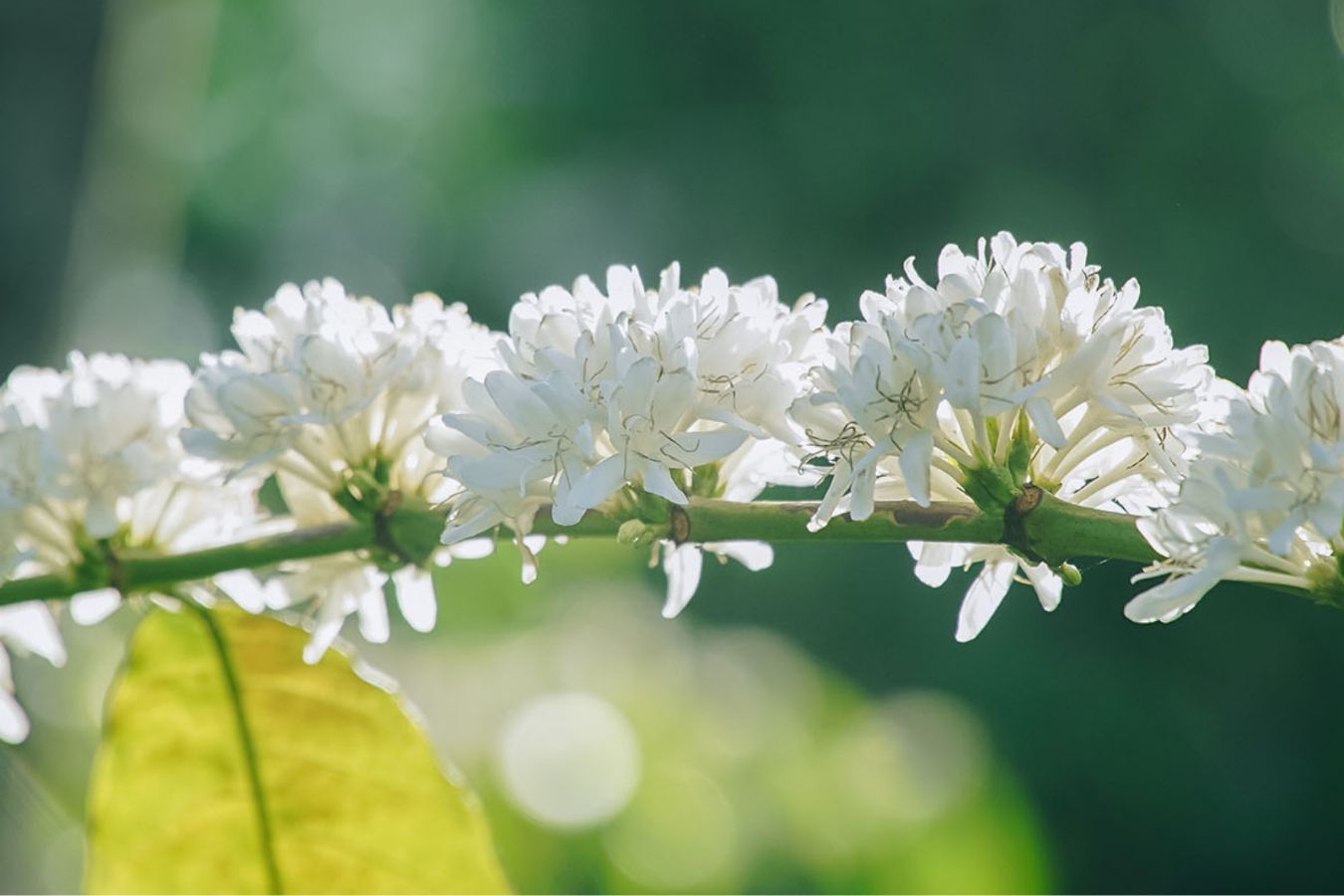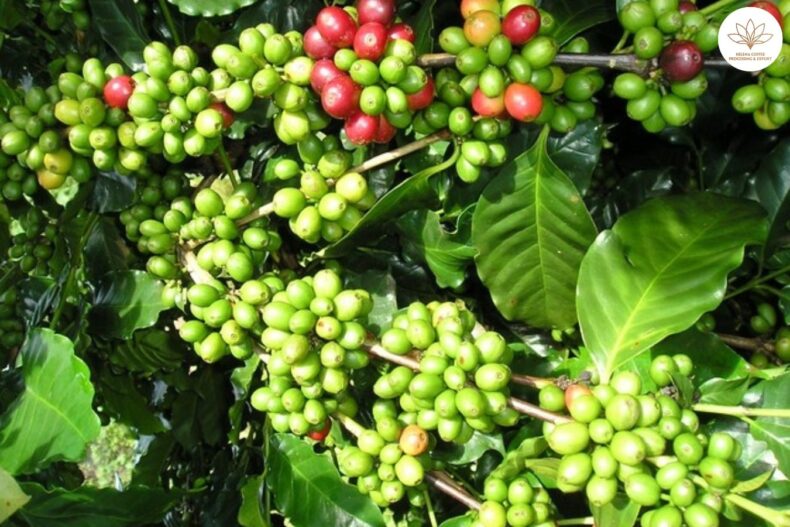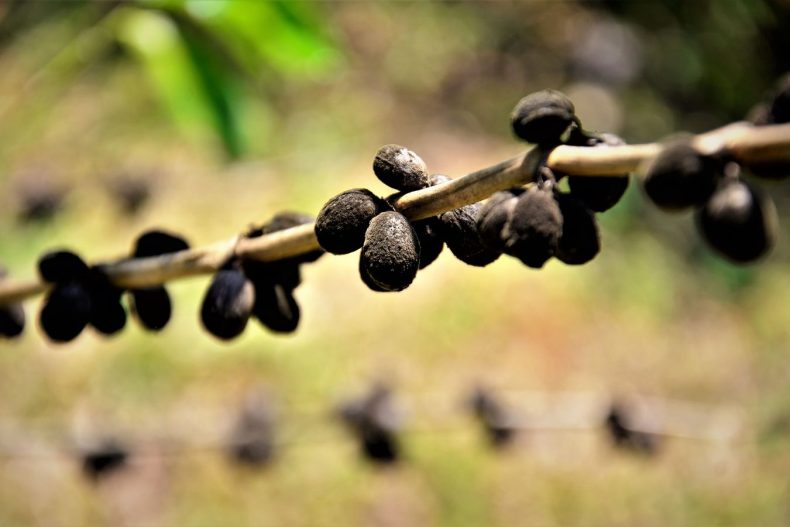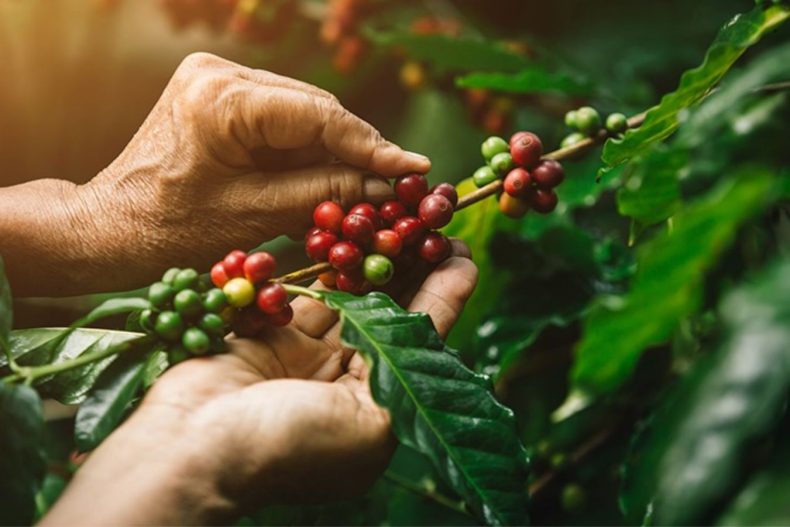
Sustainable Living Environment for Coffee Plants: For an organism to grow healthy and stable, they need to be healthy, nutritious, and safe. So, coffee trees are now being cultivated mainly through humans to ensure more productivity than coffee varieties that grow wild in the forest. Let Helena find out how they are cared for and developed in the environment.
The future of the coffee industry is tied to a healthy environment. Climate change is the leading cause of threats to farmers’ land and, at the same time, increases the risk of pests and diseases.
Extreme weather can also damage or delay the harvest season. On the other hand, the coffee production industry is also associated with many problems that adversely affect the environment, such as water pollution, land degradation, and biodiversity loss.
Designing Sustainable Ecological Models For Coffee Plants
Coffee is a perennial crop that can be harvested throughout its life cycle. Compared to soybeans or sugarcane, it is clear that farmers do not need to cut down all old trees to replant new roots.
This can waste the fertile soil ecosystem and the living organisms in it. The coffee tree is broken; if we know how to use water and fertilizer appropriately, a coffee garden can create conditions for wild animals to thrive.

Impact of Living Conditions on Coffee Fruit Quality
Coffee plants can only be as healthy as the ecosystem in which they are grown. When you focus on the land and the habitat, the quality of the coffee plant also improves.
When this happens, the coffee cherries will stay on the branch longer, ripen more evenly, and yield higher. Although it is too difficult to do this, farms in the Central Highlands are making step-by-step efforts to improve the living environment for the coffee tree and their livelihood.
Operating Model
Unfortunately, poor land management practices and production processes have ruined entire ecosystems: Land degradation, deforestation, and loss of wildlife populations. However, ranchers can use several techniques to mitigate this impact.
Agroforestry model
As a model combining intercropping of perennial plants with short-term plants, thereby creating a rich ecosystem, allowing many natural insect species to have conditions to develop, species such as spiders will be Natural enemies to inhibit the outbreak of a disease originating from caterpillars.

Water conservation and treatment
Water pollution is one of the farm’s most challenging and costly environmental problems. Factories that use husking machines and water from the coffee processing tank do not go through the treatment system but discharge it directly into the environment, a natural disaster.
This wastewater source affects groundwater, soil, and organisms living in ponds and lakes near the farm area. On the other hand, using chemical fertilizers with high concentrations also affects the groundwater and the health of local people.
Inhibits and eliminates the factors that cause disease
Excessive use of fertilizers also harms the environment and water resources, but coffee trees are even more vulnerable and susceptible to diseases without fertilizer.
Besides, we are constantly faced with pests in nature; there is no way to eliminate them; when an old pain disappears – a new type will be born, even evolve. At a higher level, to adapt to drugs and chemicals, it is best to keep pests and diseases at acceptable levels.

Some farms often prioritize using natural insect traps, natural enemies, or moderate medicine. Many criteria are given to apply and survey to choose the most optimal option. Of course, chemical drugs are only a last resort.
By doing so, they can save a lot of resources and have less impact on the natural environment. This takes time but is beneficial for the environment to revive in the long run.
Erosion control
When people’s needs are too great, the current cultivated area will not be enough to create a food source for people; they choose to destroy forests. Deforestation is the number one cause of erosion; losing topsoil makes the land more vulnerable to heavy rains and flash floods.
The agroforestry model helps farms solve this problem, creating conditions for organisms to multiply while improving soil quality and preventing leaching.

Diversify wildlife resources
A diverse ecosystem supports the growth of coffee trees; here, typically bees, experts give a lot of evidence about the benefits of bee populations to the plant.
Arabica can be self-pollinating; they do not need bees to produce fruit. However, studies have shown that bees on a coffee farm can significantly increase productivity compared to a typical farm (an increase of about 20%).
Another benefit is that farms can extract honey from coffee flowers, a safe and healthy way to increase income.
A homogenous farming process
Different agricultural practices in each region can harm the environment, and coffee is no exception. Domestic wastewater, chemical pesticides, garbage, and more harm the environment.
Fortunately, more and more farms are making an effort to use natural, recyclable energy and invest in the proper waste treatment system, all of which will improve. Solve current pollution problems and help future generations.
Growing high-quality coffee and showing concern for the environment are not two goals; they must go together. Plant biodiversity improves soil structure and quality, beekeeping improves pollination and increases crop yields, and agroforestry helps protect crops from pests and diseases. Conserving and treating water significantly impacts communities while ensuring coffee is produced with clean water.
A closed process like this will be a massive challenge for small-scale farms, but if they understand their strengths and weaknesses, farms can customize the model accordingly with their capacity.


